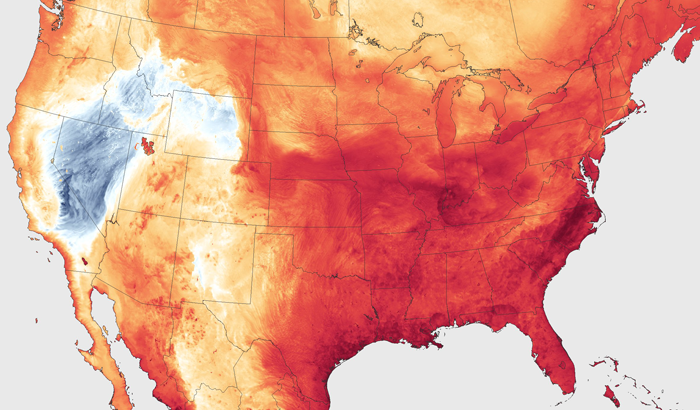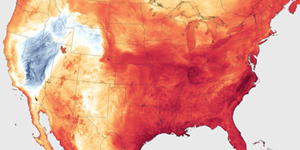Heat Domes and Cooling Science
Can science help you beat summer heat? As a Heat Dome presses down on parts of the U.S., students can explore practical, real-world, cooling strategies with hands-on science experiments and activities.

Hot weather may go hand in hand with summer in many areas of the United States, but the summer heat engulfing parts of the country over the last week was created by what is being widely referred to as a Heat Dome.
It sounds pretty ominous. If you happen to have watched the Under the Dome TV series (based on a Stephen King book), you may have a good image in your head of what being trapped under a "dome" means.
A "Heat Dome" scenario is similar.
According to the National Oceanic and Atmospheric Administration (NOAA), a heat dome is created when "high pressure in the upper atmosphere acts as a lid, preventing hot air from escaping. The air is forced to sink back to the surface, warming even further on the way." While the meteorological conditions that lead to a heat dome are typical in summer, the National Weather Service issued heat warnings for 12 states last week. Over the weekend, the heat dome descended upon the northeast, with states like New York recording scorching temperatures in the high 90s, and heat advisories remain in effect in many areas.
Staying Cool
Crazy summer heat is a great time to think about and experiment with the science of staying cool and keeping things cool.The following student science projects guide kids in an exploration of cooling strategies they can try at home:
- Make Ice Cream in a Bag
- Keep Your Candy Cool With the Power of Evaporation!
- What's the Fastest Way to Cool a Soda?
- Supercooling Water and Snap Freezing
Be on the lookout, too, for everyday opportunities for kids and families to explore "cool" science around the house. Do you use an insulated tumbler (like a Yeti)? How does the stainless steel and double-wall vacuum insulation work to help keep a cold drink cold? How do these tumblers perform in heat dome conditions?
Students who get interested in "cooling" science may also want to consider longer-term science fair projects like these:
- Can the Color of Your House Reduce Your Energy Footprint?
- Chemistry of Ice-Cream Making: Lowering the Freezing Point of Water
- Rooftop Gardens: Are They a Cool Idea?
- Want to Warm Up or Cool Down? Go Underground!
Further Reading
For media coverage of this summer's Heat Dome, see the following articles:- Why the "Heat Dome" Will Scorch Nearly the Entire U.S. This Weekend
- 'Heat Dome' Causing Excessive Temperatures In Much Of U.S.
- A 'Heat Dome' Is Coming. Domes Are Bad.
- What Is a 'Heat Dome'? Everything You Need to Know
- 'Heat dome' takes over as New Yorkers try to bear 96 degree weather
- Why This Summer Is So Hot--And Why the Future Will Be So Much Hotter
Categories:
You Might Also Enjoy These Related Posts:
- Plastics and Earth Day - Science Projects
- Arduino Science Projects and Physical Computing
- 10+ Robotics Projects with the BlueBot Kit
- 5 STEM Activities with Marshmallow Peeps
- March Madness Basketball Science Projects: Sports Science Experiments
- Women in STEM! More than 60 Scientists and Engineers for Women's History Month
- Explore Artificial Intelligence and Machine Learning with Student AI Projects
- 10 Reasons to Do the Rubber Band Car Engineering Challenge










